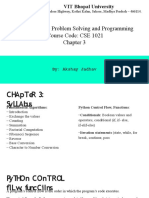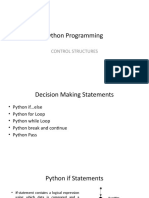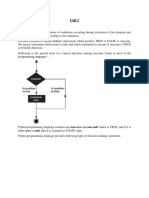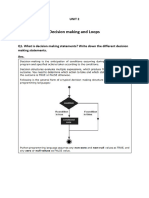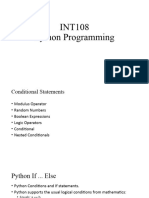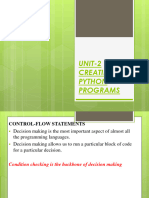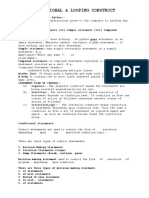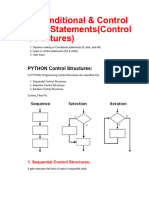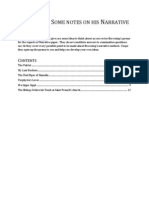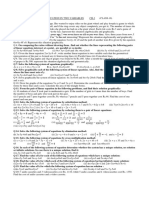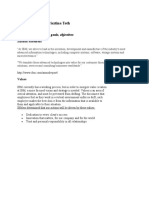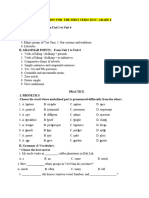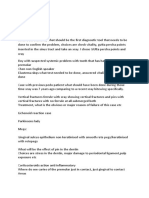0% found this document useful (0 votes)
18 views31 pagesLecture 2
The document explains the concepts of conditionals and iterations in Python programming, detailing various conditional statements such as if, if-else, elif, and nested conditionals. It also covers loops, particularly the for loop and while loop, including their syntax and usage for repetitive tasks. Additionally, it discusses shortcuts for conditions, the absence of switch-case statements in Python, and provides examples and quizzes to reinforce understanding.
Uploaded by
manassrivastavayoCopyright
© © All Rights Reserved
We take content rights seriously. If you suspect this is your content, claim it here.
Available Formats
Download as PDF, TXT or read online on Scribd
0% found this document useful (0 votes)
18 views31 pagesLecture 2
The document explains the concepts of conditionals and iterations in Python programming, detailing various conditional statements such as if, if-else, elif, and nested conditionals. It also covers loops, particularly the for loop and while loop, including their syntax and usage for repetitive tasks. Additionally, it discusses shortcuts for conditions, the absence of switch-case statements in Python, and provides examples and quizzes to reinforce understanding.
Uploaded by
manassrivastavayoCopyright
© © All Rights Reserved
We take content rights seriously. If you suspect this is your content, claim it here.
Available Formats
Download as PDF, TXT or read online on Scribd
/ 31





